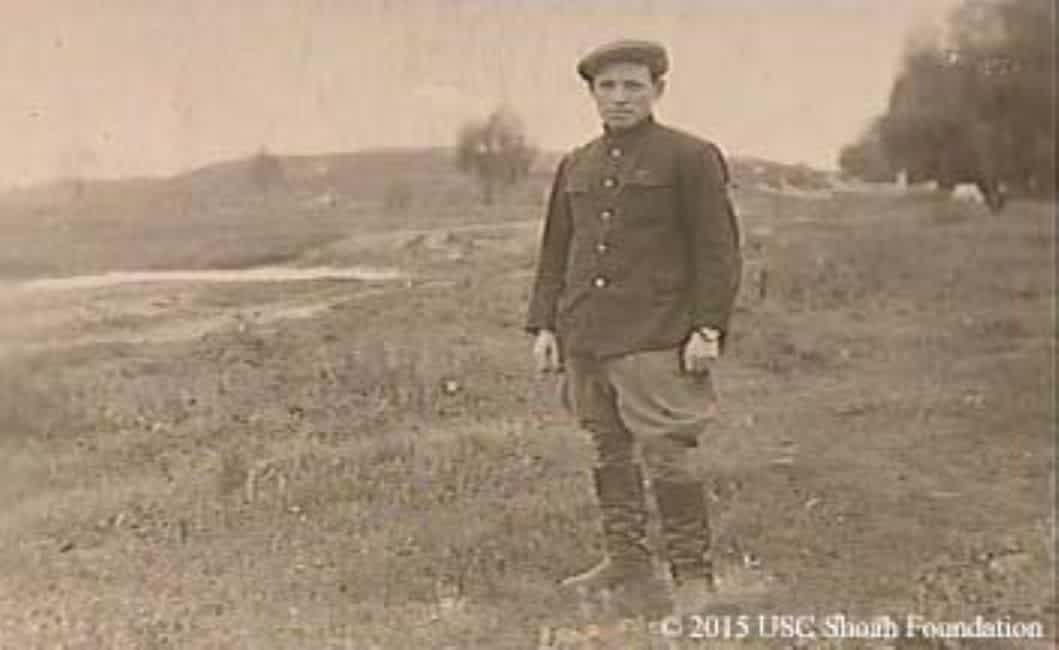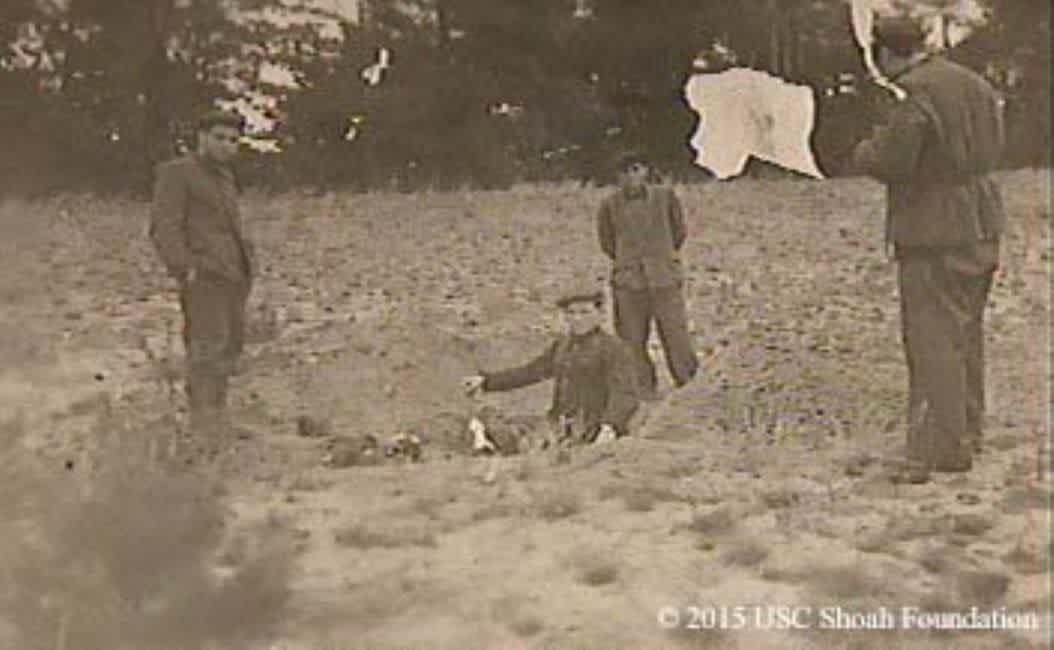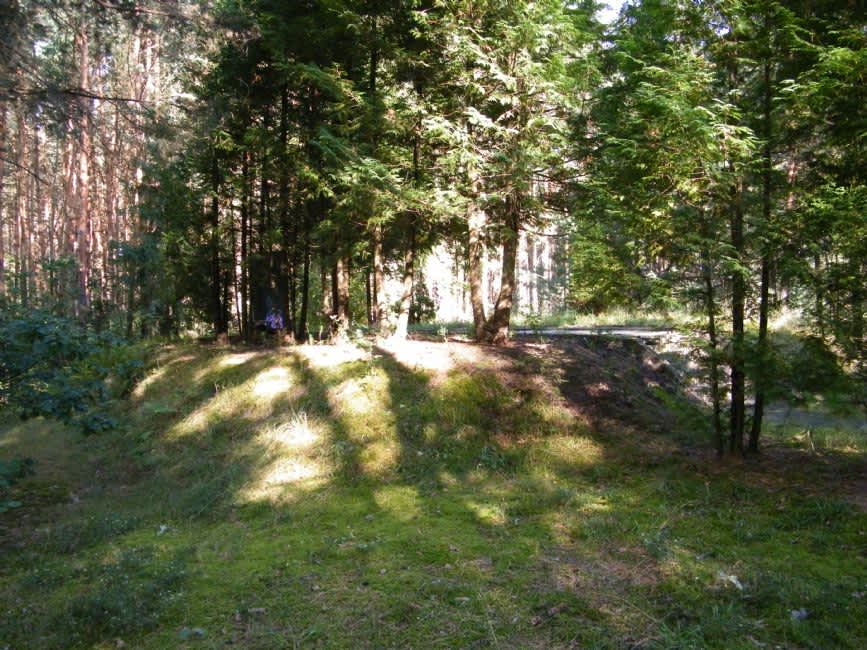Semyon Menyuk, a Holocaust survivor, standing near the Gorbki Forest. A photograph from the interview with Semyon Menyuk, USC Shoa Foundation Institute, copy YVA O.93/26447
USC Shoah Foundation Institute, University of Southern California, Copy YVA 14616900
Gorbky Forest Related Communities




